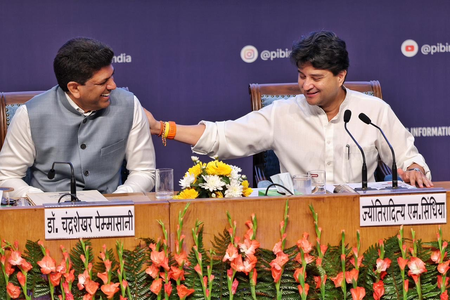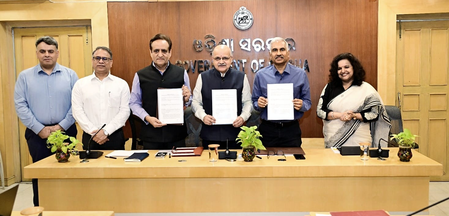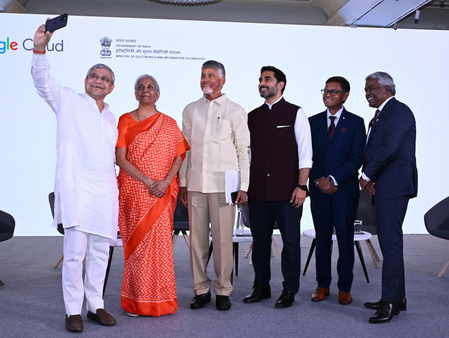
New Delhi, Oct 17 (IANS) India is no longer a follower in telecom and has now become a leader in the sector, both in terms of services and also in terms of products, Union Minister for Communications and Development of North Eastern Region, Jyotiraditya M. Scindia, said on Friday.
The number of customers across the country and the optical fibre cable network has expanded multiple times, the minister added.
Addressing a press conference on achievements across the Ministry of Communications encompassing the Department of Telecommunications (DoT) and Department of Posts (DoP), Scindia said that internet connections had seen remarkable growth, and broadband connections had also increased significantly over the years.
“When we talk about scale, there is no rival to India in terms of exponential scale. If you were to purely classify India as a digital nation, India would be the third-largest digital nation in the world. So the Prime Minister’s foresight 11 years ago of creating an invisible digital highway and on that digital highway, creating the capability of multiple applications to reside and write, today has become a reality,” he said.
The minister termed BSNL’s financial revival as one of the “most remarkable achievements” of the Telecom Department.
After 18 years, BSNL turned profitable at the operational level, recording Rs 262 crore in Q3 and Rs 280 crore in Q4 of FY2024-25.
“BSNL’s EBITDA has jumped threefold to Rs 5,395 crore, and its losses have been reduced from Rs 5,400 crore to Rs 2,400 crore,” Scindia said.
This profound national transformation is also spearheaded by the successful deployment of the fully indigenous 4G stack—a massive technological breakthrough that places India among an elite group of nations capable of developing its own end-to-end telecom technology.
Under the government’s “100 per cent telecom saturation” mission, India has achieved 75 per cent of its target within a year. Out of 17,000 towers planned under the 4G Saturation Project, almost 13,000 have already been installed.
The aspirational district scheme has reached 81 per cent saturation, while Left-Wing Extremism (LWE) affected regions have achieved from zero per cent to 57 per cent in Phase I, and from 74 per cent to 87 per cent in Phase II. For island territories, execution has improved from 38 per cent to 84 per cent.
To accelerate pending projects, the ministry created a real-time dashboard to monitor and resolve land, forest, and security-related issues.
The Union Minister also underscored DoT’s advances in telecom security. AI-based tools like ASTR have disconnected more than 82 lakh fraudulent mobile connections, while the Financial Fraud Risk Indicator system has prevented scams worth nearly Rs 200 crore.
“Google has now joined this effort, which is a huge fillip,” he noted. A unified digital intelligence platform (DIP) now enables data sharing among over 750 government and private entities, including all state governments, banks, and law enforcement agencies.
Telecom regulator TRAI has introduced monthly reporting for service quality, replacing the earlier quarterly cycle. Telecom operators are now required to map towers publicly and ensure benchmarks such as less than 2 per cent drop in call rates and latency below 50 milliseconds by April 2026.
The ministry has also established a single-window clearance portal to reduce right-of-way approval timelines, cutting average clearance time from 448 days in 2019 to just 33 days in 2025.
Scindia emphasised the ministry’s shift towards accountability and collaboration. “Every Chief General Manager at BSNL is now a CEO of their circle, setting quarterly targets and reviewing them regularly,” he said.
–IANS
aps/vd




